-
Posts
19,729 -
Joined
-
Days Won
1,567
Content Type
Forums
Detector Prospector Home
Detector Database
Downloads
Posts posted by Steve Herschbach
-
-
-
-
Hi Tom,
Because those dealers have pouches to sell, unlike your local dealer? As it says in my article "It was discontinued for several years and then made available again. Last MSRP I saw was $18.95 and part number 103696"
Have you tried contacting the dealers that say they have them?
We were using the 14" coils for ground coverage to look for large gold nuggets in low mineral ground. I was not thinking you were involved in that kind of scenario and so advised that large coils are not usually useful on the Gold Bug 2 in higher mineral ground. In my opinion. I currently do not own a large coil for my own Gold a Bug 2 for that reason.
-
-
I have used my Gold Bug Pro, which is similar, in pouring down rain with no ill effects. Except for the display fogging, which went away when dried later. It would be better I am sure to protect the control box. A plastic sandwich bag works remarkably well for cheap.
-
There is a signal from the GPX - JP mentions it himself in the video. But it is extremely weak.
The problem with video of course is people see what they want to see. If the desire is to see proof the GPZ is better, that is what you see. If you are skeptical of the GPZ, you see a dozen reasons why the GPX could have done better. It is one big reason I am not very excited about doing video myself.
For instance if you want to go down the rabbit hole you can just go with the possibility that maybe all the GPX needed was a 16" mono. The GPZ has no coil options at this time. Or if the GPZ hits a small specimen, you can mention that the GPX may have hit it with a small coil. Or different timings.
What gets overlooked is that the GPZ is doing what the GPX can do with a bigger coil, or a smaller coil, or different timings, all at once with one setting and one coil. Yeah, I think the GPX in multiple passes with multiple coils and different settings can give a GPZ with a single setting and coil a run for the money in many cases. As long as you have time to hit the same ground multiple times. And even then, the GPZ will hit some gold a GPX just can't hit.
Any light bulbs?
For me pounding old patches is fine and dandy, but my personal use of the GPX is going to be for patch hunting and knowing that I have the best shot first time no matter what in a single pass of getting what is there. I am going to spend most of my time this summer detecting on ground that has hopefully never seen a coil, and it will see mine just once.
Honestly though, if you have a GPX 5000 and a bunch of coils and know which timings to use and a SDC 2300 and the time to apply it all in various combinations, then you are pretty well set, and no burning need to get a GPZ 7000.
-
Welcome to the forum, and tell your wife detectorists around the world are in awe of her!
-
Here is another one, this by Gerry McMullen and crew. Looks to be Majuba/Rye Patch region, northern Nevada? Gerry is the consummate salesman so there is a bit of that here but I have no doubt about the reality of the finds themselves.
That is a prototype unit - orange coil. I am at the Minelab dealer conference in New Orleans as the secret guest speaker on the GPZ 7000. Gerry is sitting across the aisle from me, and they announce they have a video to play. The real short intro video posted earlier, done by Gerry. I went over and said "you dog" and slapped him on the back.
This stuff is all so hush hush neither of us knew the other was involved!
Gerry is a nice guy, really works hard for his customers. I got to know him when he brought a group up to my Moore Creek Mine the very last week I was running the show. We found a pile of gold that week and he and his group helped make it a very memorable and bang up going away week for me.
Minelab GPZ 7000 Field Test & Review
-
Now we know why you have been absent - busy you are!
And Happy Birthday My Friend!
-
I just got mine and have not actually used it in the field yet, but I like it already. I will post more end of next week after I have a chance to get out and about with it more. Bottom line is looks like Garrett took a great pinpointer and made it better.
-
This is a follow up thread to my previous thread Control Box Cover For Gold Bug 2.
The Fisher Gold Bug 2 was one of the very earliest best designs for nugget detecting ever conceived and to this day I think the case can be made for it being about as good as it gets. Lightweight, tough, and easy access control panel. But what really sets the Gold Bug 2 apart is a feature getting really rare these days. It comes set up right out of the box with the ability to hip or chest mount.
Now light as the Gold Bug 2 is this may seem to be no big deal. Many detector manufacturers these days feel that way. Thier detector is pretty light, so why worry about hip or chest mount capability? Most purchasers do not care, so the capability is fading from the scene. However, there is hope with new wireless designs that are bringing this capability back to the fore, as in the XP DEUS, but better yet, with no cables at all.
Even the DEUS though feels heavy compared to a hip mounted Gold Bug 2 sporting a 4" x 6" elliptical coil. Talk about featherweight! Hip or chest mounting keeps the control box under the rain jacket, safe and dry. For serious wading it is impossible to beat chest mounting with anything short of a waterproof detector.
The Gold Bug 2 control box slides off the rod assembly. Two slim slots integrated onto the back of the control box are designed for belt use. Simple as can be to hip mount.
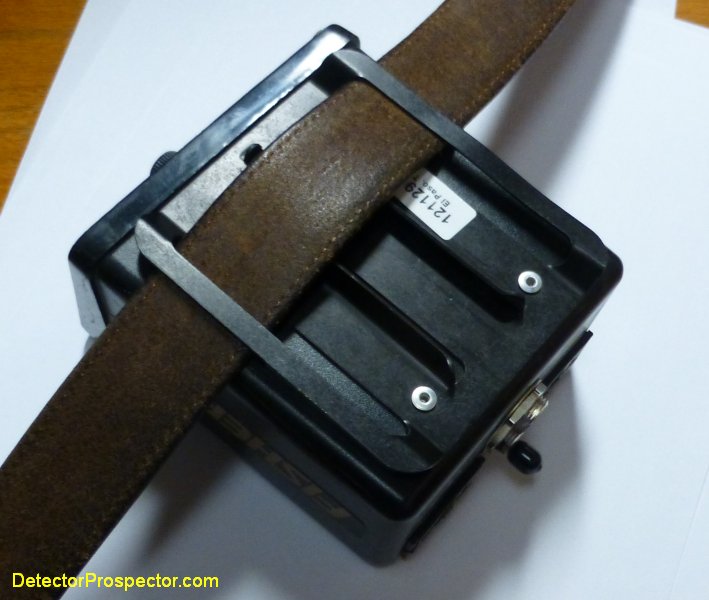
Belt slots on Gold Bug 2
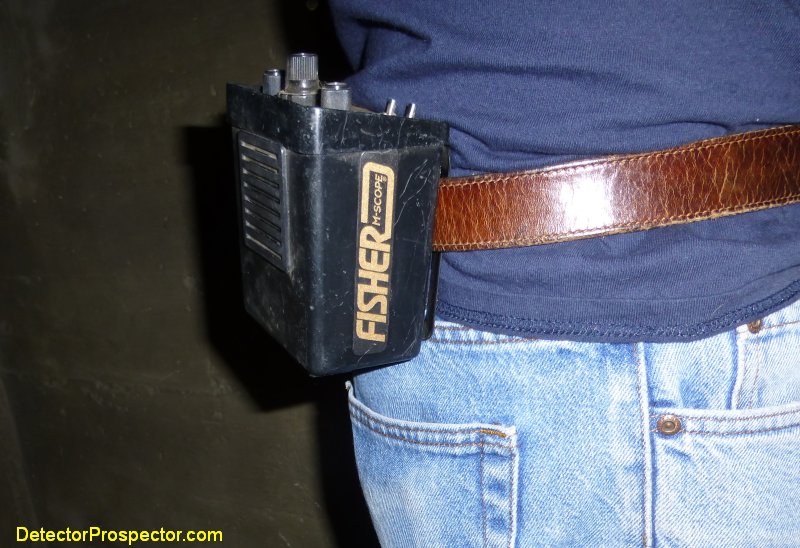
Now the fun part is you can make a chest harness for nothing. Here I have just taken a camera strap I had sitting around and clipped it into the upper end of each belt slot. Adjust belt and strap to length and now you have a harness! Finally, when used in conjunction with the control box cover from the other thread, you have a nice chest mount setup with cover.
Very important. Be very aware of the coil cable where it exits the control box. I mount the hip box on my rear hip so when I bend over the cable does not bend against my body. Same thing with chest mount. Get the control box up high to try and eliminate any excessive repeat bending in the cable. If you ignore this you will have a premature cable failure at the point, so do not say I did not warn you.
Simple homemade harness for Fisher Gold Bug 2
Gold Bug 2 chest mount
Chest mount with cover
Here are a couple real life photos. First with me at Ganes Creek, Alaska in 2001 with my first larger nugget I ever found there, a rocky 14 dwt specimen. We were swinging 14" coils those days for ground coverage. Then my buddy Jeff Reed in 2002, again at Ganes Creek, with a chest mount setup.
-
Next up I will be the speaker at the Reno Prospecting & Detecting Club on March 10th
http://www.renoprospectinganddetectingclub.com/meetings.html
-
I was thinking exactly the same thing Chris.
-
Using The Minelab GPZ 7000 Part 1
-
My problem with video is shooting it, editing, etc. seems like work so I have been struggling to get motivated to do it. I tell myself I am going to do it. I have the camera, and I got a tripod just for shooting video. Two years ago. No video yet.
-
There is a very serious case to be made that a SDC 2300 and GPX 5000 together with a range of accessory coils for the GPX represents a viable and perhaps preferable alternative to the GPZ 7000. There is as of yet no single detector solution that solves all situations that a person might encounter.
-
Very good time to get a used GPX dirt cheap. Kind of ironic when the main thing undermining sales of new GPX detectors is used GPX detectors.
-
What is don't understand is why it does not have any sort of discrimination? For starters it measures the target response in the time domain so it should at least be possible to have a GPX type of discrimination? Secondly, since it transmits a VLF type signal, even though it is an alternating VLF type signal, should this tech not lend itself to some sort of VLF discrimination as well? The GPZ's closest living relative is Minelabs FBS/BBS units or Whites multiple frequency units, which have excellent discrimination, surely ZVT tech is very conducive to proper discrimiation?
Asking these questions to myself leads me to further questions,
1 Did Minelab rush the GPZ onto the market before another Manufacturer released their new tech? or
2 Are Minelab planning to squeeze more $ from its customers by introducing it at a later date?
Pretty hard to say rushed to market since this thing probably was conceived before the GPX 5000 came to market.
Discrimination seems an option. I always chuckle at the concept that any company should not be trying to make money. Minelab is owned by shareholders and they have a serious legal responsibility to look out for the interests of the shareholders. Any attention paid to customers has to be with that interest in mind. If I was running the show, and if I had a lead in the technology, I would absolutely not lay all my cards on the table at once. No responsible CEO does or he gets fired. I would say you can 100% expect new GPZ models every few years with new abilities and options, and that many of those abilities exist in the lab right this moment for delivery years from now. That is just how business works. In that regard I would not expect Minelab to be any different than any other corporation.
If Minelab had serious competition it might be another story. Usually companies are straining to leap frog each other. The only real competition Minelab seems to have when it comes to this technology is Minelab.
-
The GPX prices should stabilize now that many people are digesting the fact they will probably be keeping theirs. Or buying a new one since it is now the bang-for-the-buck option. Interesting how yesterday's top price magically became today's mid price. Perceptions are resetting.
I am having the opposite feeling about forum discussions however. There is remarkably little discussion of the GPZ on most forums. The only action appears to be here and on the Australia Gold Detecting & Prospecting forum. I am guessing this reflects that for many people the price is just so high there is nothing to talk about.
Here it is just flavor of the week. Was ATX, then SDC, now GPZ. When it settles down people will realize they can still buy a Gold Bug for $499 and go find gold.
-
Audio in a VLF detector while in discrimination mode can very much be a creation of the engineer. The signal is intercepted, interpreted, and delivered to the operator. The sound that is delivered can be anything the engineer wants, including the words "you have found a dime".
When a VLF is in pure threshold based all metal mode you are listening directly to the detector with minimum filtering introduced. You hear nuances of the ground signal itself and other audio details.
A PI is normally a true all metal type unit that delivers the signal with minimal processing. The GPX detectors are probably the most processed models. The SDC offers a livelier audio. The GPZ is sort of between the two.
Long answer to say yes, you can get a bit of an idea what is going on from the audio. The Minelab PI dual tone response is an artifact produced by the current ground balance setting and the relation of the target to that setting.
The thing here is the GPZ really is new. It is a hybrid; it is not pure PI nor pure continuous wave (VLF) but has attributes of both.
From http://www.whiteselectronics.com/the-hobby/knowledge-base/field-reports/how-metal-detectors-work
"a typical PI search loop contains a single coil of wire which serves as both the transmit and receive coil. The transmitter operates in a manner similar to an automobile ignition system. Each time a pulse of current is switched into the transmit coil it generates a magnetic field. As the current pulse shuts off, the magnetic field around the coil suddenly collapses. When this happens, a voltage spike of a high intensity and opposite polarity appears across the coil. This voltage spike is called a counter electromotive force, or counter emf. In an automobile it is the high voltage that fires the spark plug. The spike is much lower in intensity in a PI metal detector, usually about 100 to 300 volts in peak amplitude. It is very narrow in duration, usually less than 30 millionths of a second. In a PI metal detector it is call the reflected pulse."
With PI detectors it is the voltage spike that presents many problems. The coil is "ringing" after the spike and needs to calm down before the detector goes into receive mode to look for targets. This historically has limited PI detector ability to find tiny gold nuggets. The SDC 2300 works by minimizing this delay time, enhancing its ability to find small gold.
The GPZ works it's magic by never shutting the current off. Instead, the polarity is reversed by the circuit with no spike occurring and no delay needed other than whatever the engineer desires. Instead of the signal decay being measured from the moment the current shuts down, it now is measured from the moment the polarity reverses.
Where Minelab loses me is in explaining how the signal decay in the target can actually decay if the current never shuts off. The target is constantly "illuminated". I assume it has to do with the reversal of the polarity but I am not clear on this point. Minelab is still working in the time domain here and so the detector acts like a PI detector.
However, eliminating that spike and working with a continuous current has many benefits. I was told that the ground itself is energized by that spike and the elimination causes the ground to be less resonant with the electronic field that is being produced. Reducing the ground effect is one huge benefit, as is reducing any need to dampen or deal with the transient voltage spike, allowing for easy detection of small gold. At the same time the continuous field that is produced is more consistent in that it does not ebb and flow like a pulse field. Again, this can help with detecting small gold.
Oh yeah, ZVT. The reversal of polarity takes place at the instant when the current is at zero voltage. You cannot shut current off instantly but you can turn it on a dime at the instant of zero voltage. It makes for a cool sounding acronym - Minelab loves acronyms - and so ZVT.
In a nutshell I think it is the elimination of the transient voltage spike and the issues related to it that is producing benefits here. A layman trying to explain things in layman terms but I think that is the gist of it without mangling it too bad. I am sure brighter minds than mine will have issues with some of what I have said and I truly hope somebody that knows better can chime in and explain it better yet still in terms most people can understand. If nothing else, I do know we will see a paper from Bruce Candy very soon explaining it all, so stay tuned.
-
I am not betting against technology. I am betting I will be too old to care!
-
I am doubtful of locating gold directly this way. However, it could work very well indirectly.
During huge floods it is not only gold that reconcentrates but 150 years worth of nails, spikes, pipes, and other ferrous junk. The kind of junk a PI loves. I have no doubt locating these junk deposits and dredging them would be a viable concept for a mining operation.
-
Anyone that knows the history of gold rushes knows they are very limited in duration. To clarify, I mean gold rushes as occur on the scale of the individual prospector. A person working more or less on their own with limited means.
In a classic gold rush a new discovery is made, and the prospectors "rush" to the area. Typically there are very high amounts of gold found early on as easy pickings are plentiful. Unfortunately the easy pickings are soon gone, and the prospectors wait until a new discovery is made. They once again rush to the new area, and the cycle repeats.
Some gold rushes are purely economic. A quiet gold rush occurred during the Great Depression not because new gold locations were found, but because people were desperate to find income of any sort wherever it could be found. The gold rush in the 1980s was a result of skyrocketing gold prices.
Another way a gold rush occurs is when new technology takes hold. The development of the light weight portable suction dredge created a small gold rush as prospectors took to the hills with this ability to work underwater in streams and rivers.
We are in the latter days of the electronic gold rush. It really took off in the 1980s in Australia with the development of decent VLF detectors capable of finding gold nuggets. The VLF Gold Rush. The easy surface gold depleted, but then a second wave developed with the introduction of the Minelab PI detectors in the 1990s.
The Minelab PI Rush has largely run its course. It really has only been kept alive by steadily increasing gold prices as the gold finds themselves dropped off. We can find half as much gold at $1200 as we did at $600 and still pay for beans and fuel. Gold prices have been weakening however, and the technology itself reached a dead end five years ago.
I have seen the end coming for some time. It is not just gold prices and the technology but increasing regulation and ever more difficult access issues.
The entire Electronic Gold Rush has taken place in my adult lifetime and I am likely to see the day when there are only a few diehards left at it. The good news is in my opinion we are on the eve of what may possibly be the last gasp, the last breath of fresh air. The GPZ 7000 really is a new twist on electronic prospecting that promises to give prospectors what it ultimately takes to fuel any gold rush.
Hope. We have to have new hope, a new reason to believe once again we can go out and make worthwhile finds. The GPZ will succeed simply by getting everyone to hit everything one last time, as hard as it can be hit. There is not one bit of ground I have ever detected that I would not give another go one more time, just because I have a GPZ 7000. That means I and others will find gold that until now has gone missing.
People will point out that other detectors may well have found some of the gold. That it simply got missed before and now the GPZ found it. They will in many cases be correct, but in the end I think they are missing the point. It is that renewed hope, that renewed faith that really matters, as once again prospectors hit the field in numbers with what they perceive as being the latest and greatest. And when it comes to gold rushes, perception is very much reality.
I am just thankful I was born when I was. Sometimes I think I should have been born in the 1800s, but the fact is I enjoy all the things modern life offers me. Instead, I got to participate in the 1980s Gold Rush in all its glory, both as a prospector and as a guy selling the shovels to the prospectors. Now, semi retired and living the dream as a full time prospector I have a chance to participate in what may very well be the last chapter of the electronic gold rush - The GPZ Gold Rush. I have to admit I am very happy to be in the right place and time to get in on the ground floor of one last party!
Exciting times my friends. Good luck to each and every one of you now and in the future days ahead.
-
The thing I am always trying to convey is no one detector is best for all people under all circumstances. Life does not work that way. If it did there would be one model of car and we all would drive it. Just because the GPZ 7000 came out all other gold detectors did not become obsolete. I think it is 80% operator and 20% detector and that is probably giving the detector too much credit.
As things stand right now the GPZ 7000 has some areas that would make a person consider other detectors:
1. The price
2. The weight
3. The lack of small coil option
4. The lack of large coil option
5. Lack of discrimination
Until we get the GPZ 10000 at 3 lbs for $1000 with full discrimination and full range of inexpensive coil options there will be plenty of room for alternatives.




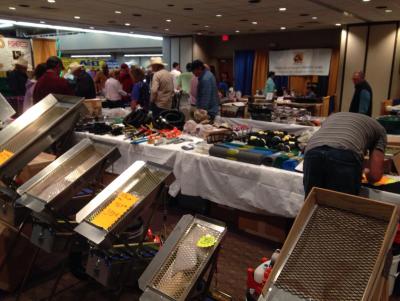
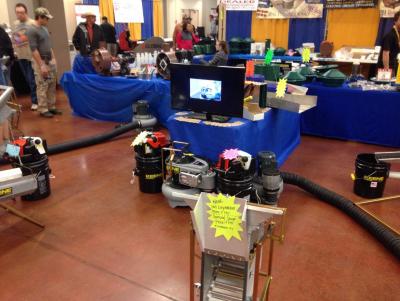
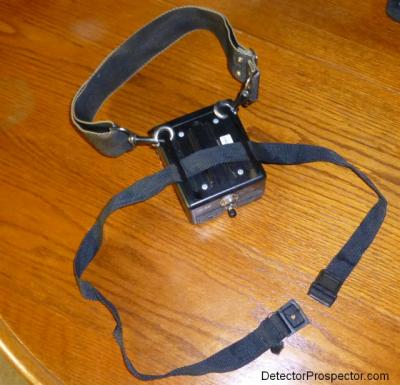
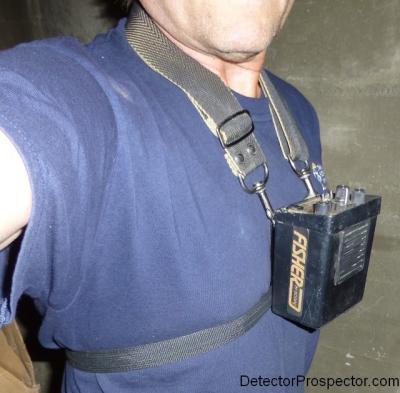
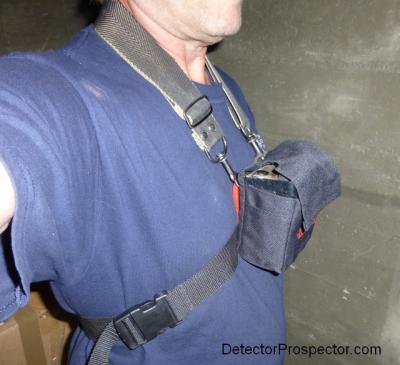
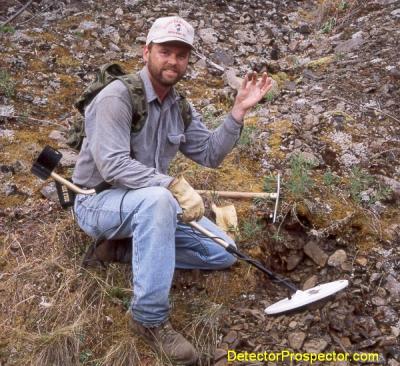
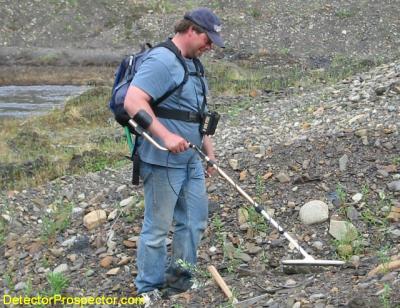
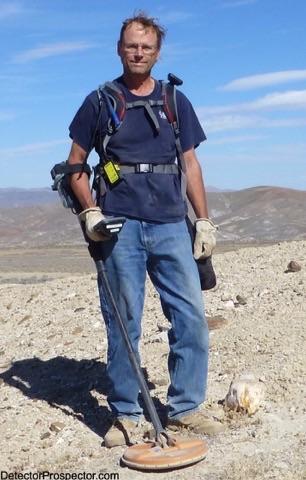
Minelab GP3500 Battery
in Minelab Metal Detectors
Posted
Never used anything but stock Minelab batteries myself so not sure on that count. Main thing I wanted to say no download is required to get messages. Link is in upper right.